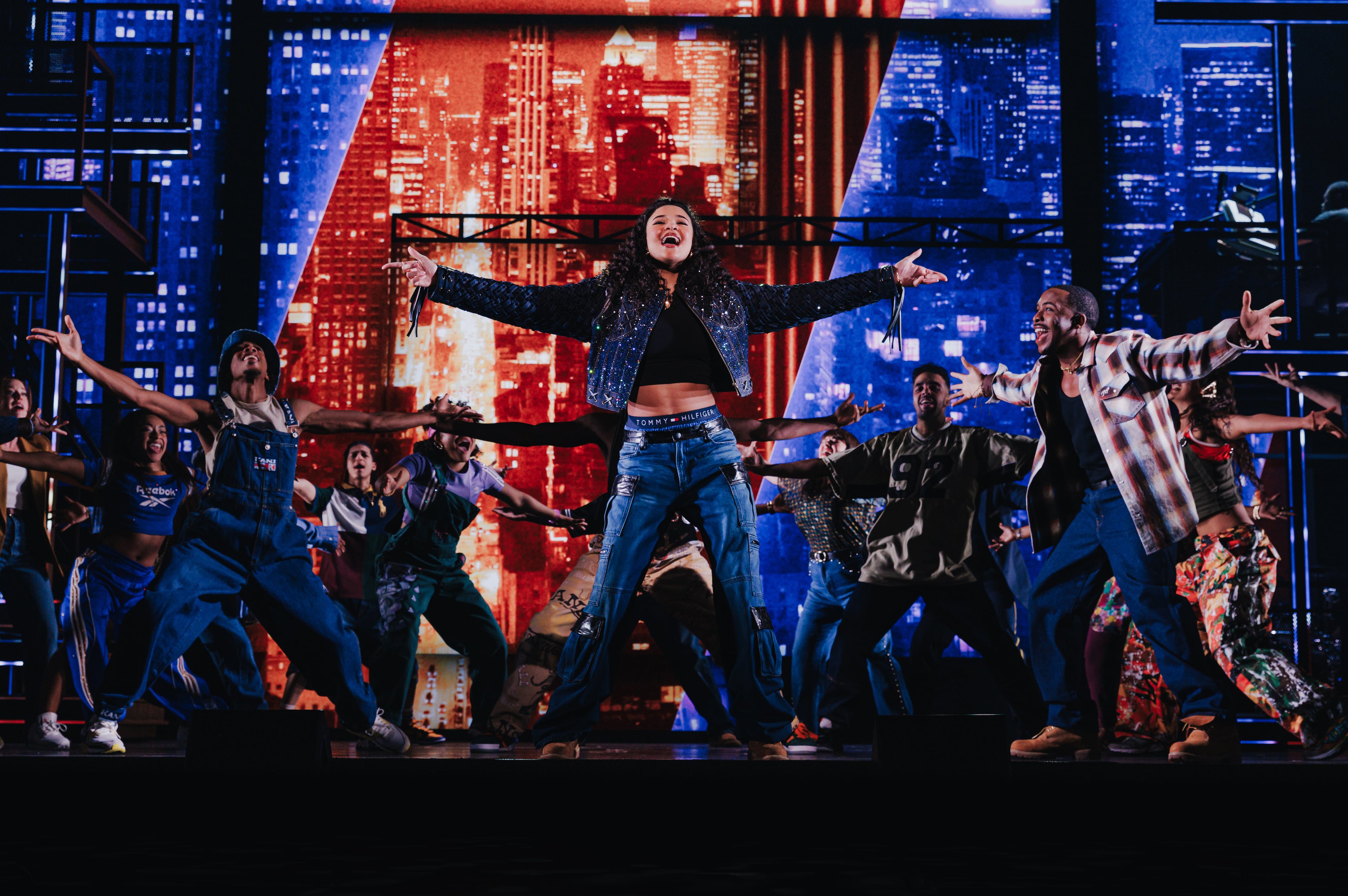Synchronicity brings ‘Mufaro’s Beautiful Daughters’ to life with humanity and flair

“Mufaro’s Beautiful Daughters” is the newest entry into Synchronicity Theatre’s family series, and in addition to being a well-crafted tale, it is also a welcome contribution to Atlanta’s culture of inclusive and diverse theatre. The former accolade is largely due to strong work from the production team and a talented group of actors who manage to weave a thoughtful and instructive story that all ages can enjoy.

The play is adapted from a children’s book by John Steptoe, itself adapted from a South African proverb which tells of two sisters: the gentle and compassionate Nyasha and the ambitious yet spiteful Manyara (one name means “Mercy” and the other means “Ashamed”). When a messenger arrives to announce that the king is inviting young women from all around to meet him as prospective wives, Manyara jumps at the opportunity. What follows is a journey that underscores the differences between the two sisters, highlighting the fable’s core message: “Who you are, who you choose to be, becomes your destiny.”
Synchronicity has assembled a well-rounded team of performers and storytellers to convey this tale. Kendra Nicole Johnson and Ja’Siah Young have excellent chemistry, playing off of each other just like real sisters. Anthony Jeremiah Nash comes off as compassionate and wise in his relationships to both his daughters, and Jonathan Bryant and Brittani Minnieweather have some hilarious sparring sessions as the nosy villagers. It is easy to feel the eagerness of the actors seep through their performances, sending an infectious energy throughout the audience.
Lerell Ross’s music is delightfully stirring, and is augmented by Taryn Janelle’s lively choreography, which pulls from African influences to create a celebratory atmosphere. This atmosphere perfuses even the more mundane portions of the show, imbuing such things as a village hut and a carefully tended garden with a reverent quality. It suggests beauty in the everyday things that Nyasha values, without necessarily devaluing the grandeur that Manyara craves. In fact, the script hints that the grand may not be so distinct from the everyday. Janelle’s choreography creates a visual language for this comparison, driving the point home while engaging the audience on an energetic level.

Janelle’s use of space is supported by Gabby Stephenson Trice’s set design, which gives plenty of room for play while evoking a strong sense of place and allowing for multiple scene changes. The entire design team helps to elevate the folkish nature of the story while generating a true sense of environment. Maliya McCall’s lights amplify the energy of the songs, lending radiant Zimbabwean sunshine for the opening number and almost operatic mood lighting for more heightened dramatic moments. L. Nyrobi N. Moss’ costumes showcase each character’s personality, while the costumes for the spirits that Nyasha and Manyara encounter serve to enhance the production’s storybook aesthetic.
The moral of the story is a simple one, and one that has appeared in narratives from around the world: you reap what you sow. This moral places a welcome emphasis on personal choice. However, the structure of the story contains a trace echo of a different, but also prevalent cultural narrative: two young women set up to be compared, with the more nurturing and self-sacrificing being favored over the woman who prioritizes her own interests. Looking at the play through this lens, it’s hard not to feel bad for Manyara, partially because Ja’Siah Young is so charismatic in the role.
That’s not to say that Nyasha’s arc is entirely passive. Though she spends most of the story ignoring her own desires, she makes a decisive shift thanks to some wisdom from her father: “You are [Manyara’s] sister. Not her mother.” That line helps to focus the narrative on highlighting Nyasha’s selflessness while preserving her agency.
The fact that this show is geared toward a younger audience is encouraging, given the sentiments of John Steptoe. Steptoe expressed that in writing the story, and studying African folklore, he discovered a new pride in his African ancestry: “I am not an exception to the rule among my race of people,” he is quoted as saying in the program. “I am the rule. By that I mean there are a great many others like me where I come from.” Even prior to publishing “Mufaro’s Beautiful Daughters,” Steptoe was hailed for creating “a new kind of book for Black children.”
Synchronicity appears to want to do the same, creating a new kind of fairy tale musical for Black children. If the numerous enraptured children I saw in the audience are any indication, they have at least succeeded in creating something in which Black children can see themselves reflected and use those reflections to absorb important lessons they can take forward.

